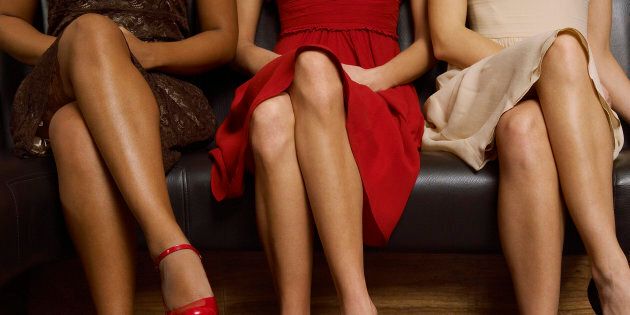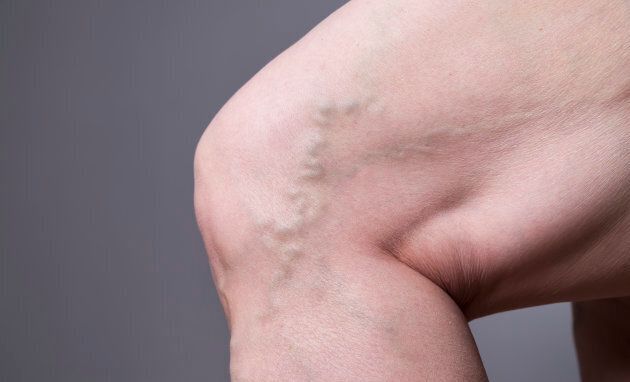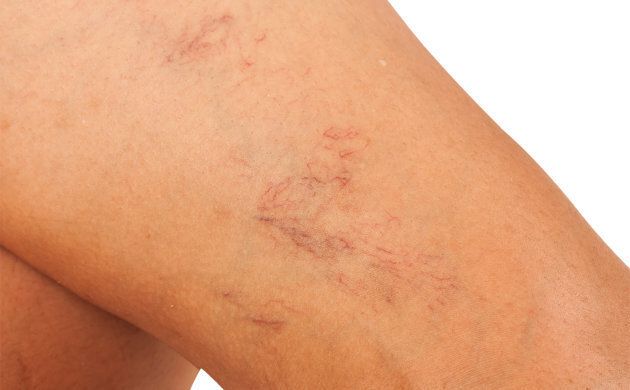
So now we know that going to bed with wet hair doesn't put us at risk of catching a cold, it's time to debunk another old wives' tale.
Does sitting cross-legged mean we're going to get varicose veins?
"The short answer is no, it does not," Doctor Mark Malouf, president of the Australian and New Zealand Society of Phlebology told HuffPost Australia.
"However, sitting for long periods of time, with legs crossed or not, if you already have varicose veins can worsen the situation because the blood sitting around in those varicose veins can pool and slow down, and may develop a clot (called 'thrombosis').
"This is part of the discussion on travel-related thrombosis that has been topical over the last few years."

Phew. While sitting cross-legged isn't great for your posture, it's not going to cause unsightly veins if you're not already a candidate. So who is likely to experience varicose veins?
"Men and women both suffer varicose veins, but much more so in women. Many patients suffer symptoms from their varicose veins while others do not," Malouf said.
"The main reason people develop varicose veins is hereditary -- mum or dad has them in 70 percent of cases that I see. That goes for the large bulging grape-like varicose veins as well as the unsightly blue and red 'spider veins' that many women and some men find very distressing."
"The diagnosis of varicose veins or spider veins is assisted by ultrasound examination of the veins to map any broken valves and reverse flow of blood in the leg veins. Veins in the arms and face and even breasts can also be treated," Malouf said.

So, if you've go them and don't like then, what can you do about them? Malouf outlines the following treatments may be available, however the best approach would need to be decided on a patient by patient basis.
- Lifestyle improvements. These include losing some weight if you are over your recommended weight, increasing your walking and exercise, avoid prolonged standing in the one place, paying attention to footwear, shoes and orthotics and making sure your workplace seating is not adversely affecting your legs or back.
- Supplements also known as Ventonics or Vento-active drugs. These can be taken by mouth to strengthen the vein walls and slow deterioration of the varicose veins. These may also help the symptoms in your legs.
- Support stockings or pantyhose. These are used to support the weakened and enlarged superficial veins. This reduces the backward flow of blood into these diseased varicose veins. Support stockings slow their enlargement and relieve the symptoms from the varicose veins and spider veins. They may also help control the swelling and fluid in your legs.
- Chemical ablation also known as Sclerotherapy or injection treatment. This ivolves an injection of an irritating solution into the veins to cause an inflammation or chemical phlebitis in the vein. It is followed by compression stockings or bandages to appose the vein walls, so the inflammatory reaction from the injection can stick the walls together, thus shrinking the diseased veins.
- Surgical removal. This usually involves a few hours in hospital (day surgery), a general anaesthetic, the ligation of the broken valves and removing the damaged or perished venous trunks and branches.
- Thermal ablation using endovenous laser or radiofrequency. This treatment uses heat to destroy the upper section of the trunk of the saphenous veins in the thigh or the back of the calf. This method obliterates the straight segments of saphenous vein lying beneath the skin but outside the muscles. Additional treatment is usually required to the enlarged and tortuous superficial branching veins that can be seen protruding just under the skin.
- Vein glue. This involves using cyanoacrylate to stick the walls of the vein closed. Relatively new, and does not involve heat or tumescent fluid injected into the tissues.